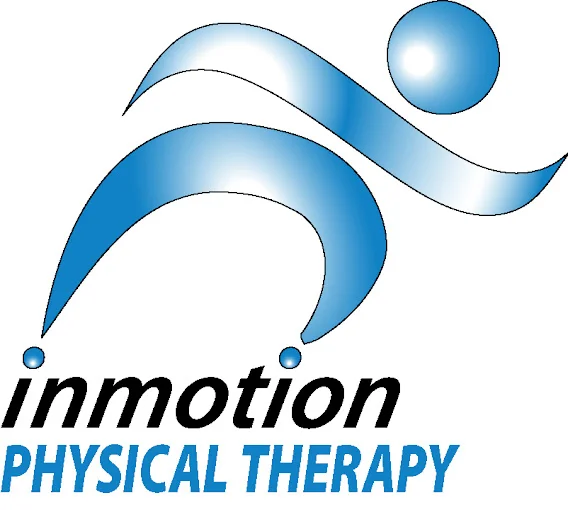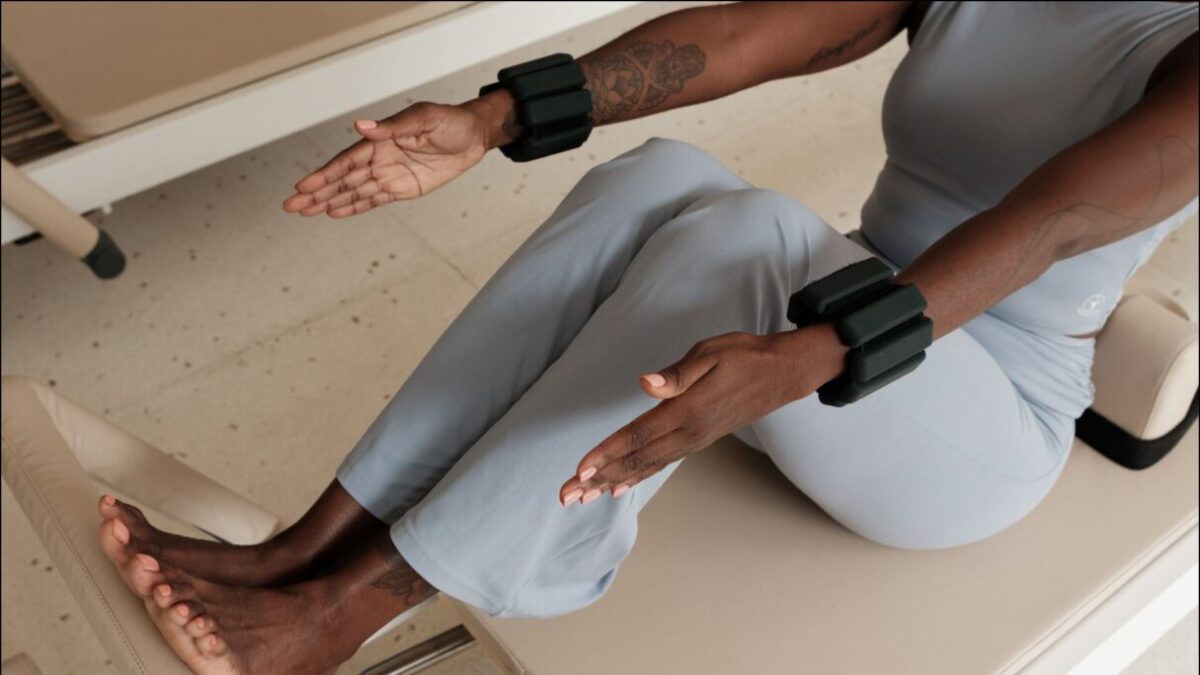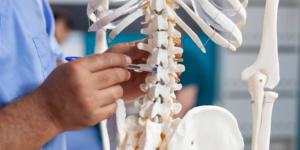Are you hesitating to exercise because of your osteoporosis diagnosis? You’re not alone. Many of our clients initially feel uncertain about which exercises are safe and how to start moving confidently again.
Here’s the good news: groundbreaking research shows that proper exercise not only helps prevent bone loss but can actually build bone density. Yes, you read that right – you can get stronger, even with osteoporosis!
The Science Behind Exercise and Bone Health for Osteoporosis
Here’s something that might surprise you: your bones are alive! They’re not just rigid support structures – they’re dynamic, living tissues constantly rebuilding themselves. Think of your bones like a busy construction site where old bone is being removed and new bone is being built every single day.
Understanding Wolff’s Law: How Bones Adapt
Ever wonder how bones get stronger? It’s thanks to something called Wolff’s Law: your bones adapt to the forces placed upon them. When you exercise, you’re essentially telling your bones, “Hey, we need to be stronger here and they lay down more bone!”
This might seem counterintuitive – especially if you’re worried about fractures. But here’s what’s actually happening:
- When you apply controlled stress through exercise:
- Your bone cells detect the pressure
- They respond by building more bone
- The bone becomes denser and stronger
- Your body becomes more resilient
- Without enough stress (like when we’re too sedentary):
- Bones don’t get the “build stronger” signal
- Bone loss happens more quickly than bone building
- Density gradually decreases
- Fracture risk increases
The Research Behind the Results
Recent studies have revolutionized our understanding of exercise and bone health. The landmark LIFTMOR trial showed something remarkable: women performing supervised, high-intensity resistance training saw a 3% increase in spine bone density in just 8 months.
Even more encouraging? These improvements were seen in postmenopausal women – proving it’s never too late to start building stronger bones!
How Different Types of Exercise Impact Your Bones
Here’s what many don’t realize: it’s not just about lifting weights. Your bones respond to various types of forces, each playing a unique role in bone health:
- Resistance Training (Lifting Weights)
- Creates compression forces on bones
- Stimulates bone-building cells
- Strengthens muscles that support bones
- Improves overall stability
- Impact Activities (Plyometrics)
- Sends signals to build bone density
- Creates beneficial stress through ground reaction forces
- Strengthens bones in weight-bearing areas
- Balance Exercises
- Reduce fall risk
- Improve bone-protecting muscle control
- Enhance body awareness
- Daily Movement Patterns
- Maintain bone health through regular activity
- Provide consistent, gentle stress
- Keep joints and muscles active
When you combine all these types of exercise, you’re not just building stronger bones – you’re building a stronger, more confident, more independent you who can continue doing the activities that bring joy to your life.
Building Your Exercise Confidence: Where to Start
Did you know that most osteoporosis fractures don’t happen during exercise? They typically occur in three main scenarios:
- During a fall
- With combined movements like bending forward and twisting (like turning to reach something in the back seat of your car)
- From seemingly minor forces like coughing, sneezing, or small bumps (when bones have become significantly weakened)
Here’s the good news: working with a Physical Therapist can help prevent these fractures by:
- Strengthening the muscles that support your bones
- Improving your balance to prevent falls
- Teaching you safe movement patterns for daily activities
- Gradually building bone strength through appropriate exercise
Before diving into specific exercises, let’s build your movement confidence. Here’s how to check if a movement is safe for you if you have osteoporosis:
The 3-Point Safety Check
Before you initiate movement, it is important to think about HOW your body is positioned to perform the task. Something as simple as reaching down to pick a box up off the floor or stepping off a curb can result in injury when you have osteoporosis. Here’s 3 things I want to you to think about:
- Neutral spine position: Imagine a straight line from your ears to your shoulders to your hips. We want to maintain the natural curvature of your spine and use your core muscles to support the movement, especially when reaching.
- Controlled breathing: A mistake many people make when doing a challenging activity is holding their breath. While this valsalva manuever may be helpful during a powerlifting competition, it is unsafe for people with osteoporosis as it can create undue pressure on the spine. Make sure to keep your breathing steady and rhytmic, and exhale during the exertion.
- Stable base of support: When reaching for items outside of your base of support, make sure you are standing on an even and steady surface. Remember, falling is the most common cause of a fracture in someone who has osteoporosis.
Safe vs. Unsafe Movements for Osteoporosis
Understanding which movements are safe and which need modification is crucial for building confidence. Let’s break this down into daily activities and exercises:
Safe Movement Patterns for Osteoporosis
- Hip hinging: instead of bending forward through your spine, sit back through your hips while maintaining a neutral spine position (this is why DEADLIFTS are safe even if you have osteoporosis)
- Controlled squatting: keep the weight in your heels as you sit back, keeping your knees in line with your toes. Try not to “plop” into the chair behind you.
- Supported balance work: while holding onto a counter or sturdy chair practice weight shifting, standing on 1 leg, and slowly progress to unsupported activities that are safe. (A physical therapist is the perfect healthcare professional to develop a personalized balance program for you)
- Progressive resistance training: Starting with the appropriate resistance, gradually increasing the load/weight as long as you can maintain your form.
Movements to Modify or Avoid if you have Osteoporosis
These movements can increase your risk for fracture for the following reasons:
- Deep forward bending: this increases pressure on the vertebrae
- Rapid twisting: this creates shear forces on your spine
- High-impact without progression: Too much force too soon may be too much for your bones to withstand
- Unsupported forward flexion: increases fracture risk in spine due to pressure on vertebrae
The goal isn’t to avoid movement – it’s to move smarter. When you understand these principles, you can confidently adapt almost any activity to make it safe and beneficial for your bones.
Your Progressive Strength Training Guide for Osteoporosis
Building strength with osteoporosis is like climbing a ladder – you take one step at a time, ensuring you’re stable before moving up. Under proper supervision, you can safely progress to build both muscle and bone strength.
Here is a sample progression path:

You will notice that this is a 3 MONTH progression plan. Building up strength takes consistency, time and patience. These exercises are general, and not specific to you, but rather provide a guideline of how to build up to progressive strength training exercises.
How Do I Know When I’m Ready to Advance to the Next Level Exercises?
- You should be able to perform all exercises with good form
- No Pain during or after exercise
- Feeling confident with the movement pattern
- Exercises start to feel “easier”
Sample Squat Progression for Osteoporosis
Here is an example of how I would progress a patient with osteoporosis to help them build bone safely while performing squats:
- TRX Supported Squat
- Tall Box Squat Bodyweight
- Goblet Squat with Weight
- Squat jump with Bands for UE support
- Squat Jump
Ready to Start Your Strength Journey?
Meet Samara, our Strength and Conditioning Specialist and Doctor of Physical Therapy. With her expertise in osteoporosis exercise prescription and background in corrective exercise, she can help you:
- Assess your current fitness level
- Design a personalized program
- Ensure proper form and technique
- Progress safely and effectively
- Monitor your improvements
- Build confidence in your movement
Balance: Your Secret Weapon Against Falls
Here’s a startling fact: one in four adults over 65 will experience a fall this year. For those with osteoporosis, a fall can have serious consequences. But here’s the good news: balance is a skill that can be improved at any age!
Why Balance Training is Non-Negotiable
Balance training isn’t just about preventing falls – it’s about maintaining your independence and confidence. Here’s 2 reasons why it matters:
- Fall Prevention
- Reduces risk of fractures
- Improves reaction time
- Strengthens stabilizing muscles
- Enhances body awareness
- Daily Confidence
- Walking on uneven surfaces
- Navigating stairs
- Reaching for items
- Moving in crowded spaces
Your Balance Training Progression
Like any skill, balance improves with practice. Start where you feel safe and progress when ready.
Level 1: Two-Foot Standing
- Feet hip-width apart
- Eyes open, then closed
- Firm surface, then softer surface
- Practice: 30 seconds, 2-3 sets
- Progress when: This feels easy and controlled
Level 2: Tandem Stance (Heel-to-Toe)
- Start with feet staggered
- Progress to heel touching toe
- Arms out for support if needed
- Practice: 20-30 seconds each foot forward
- Progress when: Can hold for 30 seconds confidently
Level 3: Single-Leg Balance
- Start near counter for support
- Gradually reduce support
- Mix in arm movements
- Practice: 10-15 seconds each leg
- Progress when: Can hold for 15 seconds without support
Level 4: Dynamic Movements
- Walking heel-to-toe
- Side stepping
- Stepping over objects
- Direction changes
Modified Pilates: Safe and Effective Exercise for Osteoporosis
If you’re looking for an exercise approach that strengthens your whole body while being gentle on your joints, Pilates might be exactly what you need. Here’s why Pilates is particularly beneficial for those with osteoporosis:
The Power of Pilates for Bone Health
Core Strength and Spinal Support
A foundational principle of pilates is finding your neutral spine position, which is essential for people with osteoporosis. Finding your neutral spine allows you to feel the natural “brace” for your spine, reducig the risk of vertebral fractures.
Balance and Stability
Another benefit of pilates is its emphasis on slow, controlled movements to enhance body awareness. This helps reduce fall risk through better balance and body awareness.
Mindful Movement
Through developing body awareness and focus on the breath, pilates helps you build your movement confidence.
The Importance of Proper Modification
Here’s where we need to talk about safety: Traditional Pilates includes many exercises that may not be appropriate for those with osteoporosis. This is why working with a qualified instructor who understands bone health is crucial.
When it comes to Pilates and osteoporosis, having the right instructor makes all the difference. At In Motion Physical Therapy, our Pilates instruction is led by a Doctor of Physical Therapy who understands both the benefits and risks of traditional Pilates exercises for those with bone density concerns.
Why Choose Physical Therapy-Based Pilates?
Traditional Pilates includes many flexion-based movements that may not be safe for those with osteoporosis. Our approach is different:
- Expert modification of traditional exercises
- Focus on spine-safe movements
- Integration of physical therapy principles
- Understanding of bone health science
- Individualized progression plans
Osteoporosis Success Story: Meet Joan
Where Joan Started
Like many of our clients, Joan initially had concerns about exercise with osteoporosis. She wanted to stay active but wasn’t sure what was safe. Her biggest worry? An upcoming trip to Portugal that would require:
- Long daily walks (5-6 miles)
- Navigating hilly terrain
- Standing for extended periods
- Managing unfamiliar environments
Joan’s Journey with In Motion Physical Therapy
Starting in July, Joan committed to a comprehensive program including:
- Physical therapy sessions to build foundational strength
- Progressive balance training for uneven surfaces
- Targeted strength exercises for hiking demands
- Functional movement practice for real-world activities
The Results?
Here’s Joan in her own words:
“I just returned from a wonderful tour of Portugal with my husband. Most days our guide led our group on 5-6 mile walks in hilly medieval cities. I was able to handle those demands despite being a senior with osteoporosis. I have been receiving physical therapy since July and am very thankful to Laura Sommer & the In Motion team for my improved strength, balance, and stamina.”
The best part? Joan didn’t stop after reaching her initial goal. She recognized the value of ongoing training and continues to work with our team every other week for strength sessions. Why? Because she understands that consistency is key for:
- Maintaining her gains
- Building additional strength
- Preventing bone loss
- Staying ready for her next adventure
Like Joan, you can build the strength and confidence to keep doing the activities you love. Whether it’s traveling, playing with grandchildren, or simply maintaining your independence, we’re here to help you reach your goals.
Why Work with a Physical Therapy Expert?
When you’re exercising with osteoporosis, having the right guidance isn’t just helpful – it’s crucial for your safety and success. Let’s explore why working with a Doctor of Physical Therapy can be a game-changer for your bone health journey.
While any exercise is generally good, working with a Physical Therapy expert provides:
- Clinical Expertise: Physical Therapists have a deep understanding of bone health, disease progression, ability to read and interpret your DEXA scan and knowledge of how medications affect exercise response.
- Personalized assessment of your needs: Physical Therapists provide a comprehensive movement analysis, strength testing, balance testing, and identification of risk factors specific to you
- Safe progression of exercises: Starting an exercise plan is intimidating! Working with a Physical Therapist you can ensure that your starting point will be based on your current abilities
- Form and Technique: Physical Therapists can provide hands-on correction of movement patterns and provide real time feedback during your exercises to ensure proper form.
A Doctor of Physical Therapy brings comprehensive medical expertise to your care, having completed doctoral-level education and obtained state licensure as a healthcare provider. Their extensive training includes deep understanding of bone health and disease processes, allowing them to develop treatment plans based on clinical expertise. As licensed healthcare providers, they can communicate directly with your medical team to ensure coordinated care that aligns with your overall health goals.
What does this mean for you? It means your safety comes first, you can build your confidence under the care of an experienced medical provider, and sets you up for long-term success when you continue to work on these exercises with a trainer or independently.
Your Osteoporosis Exercise Guide: Next Steps
Living with osteoporosis doesn’t mean giving up an active lifestyle – it means moving smarter with expert guidance. Through this guide, you’ve learned how proper exercise can not only maintain but actually improve your bone density. You’ve seen how Joan went from hesitating about exercise to confidently exploring Portugal, and how our team of experts can help you achieve your goals safely and effectively.
Don’t let uncertainty about exercise hold you back from living the life you want. At In Motion Physical Therapy, we create personalized plans that build both strength and confidence, ensuring you can stay active and independent doing the activities you love.
Ready to take the first step? Let our team of Doctors of Physical Therapy guide you through a comprehensive assessment and create a plan tailored to your needs. We’ll be with you every step of the way, ensuring safe progression and lasting results.
Call 516-659-1087 or click above to schedule your appointment. Take the first step toward stronger bones and a more confident you.
Serving the Farmingdale, NY community with expert one-on-one care to keep you In Motion.
*Note: This guide provides general information and should not replace professional medical advice. Always consult your healthcare provider before starting any exercise program.*
Additional Resources:
- Deadlift Guide for Osteoporosis
- 5 Best Osteoporosis Exercises
- Pilates Services
- https://www.cdc.gov/falls/data-research/index.html
- https://www.osteoporosis.foundation/health-professionals/fragility-fractures
- https://www.cdc.gov/steadi/patient-resources/index.html
- https://onlinelibrary.wiley.com/doi/full/10.1002/jbmr.3284



